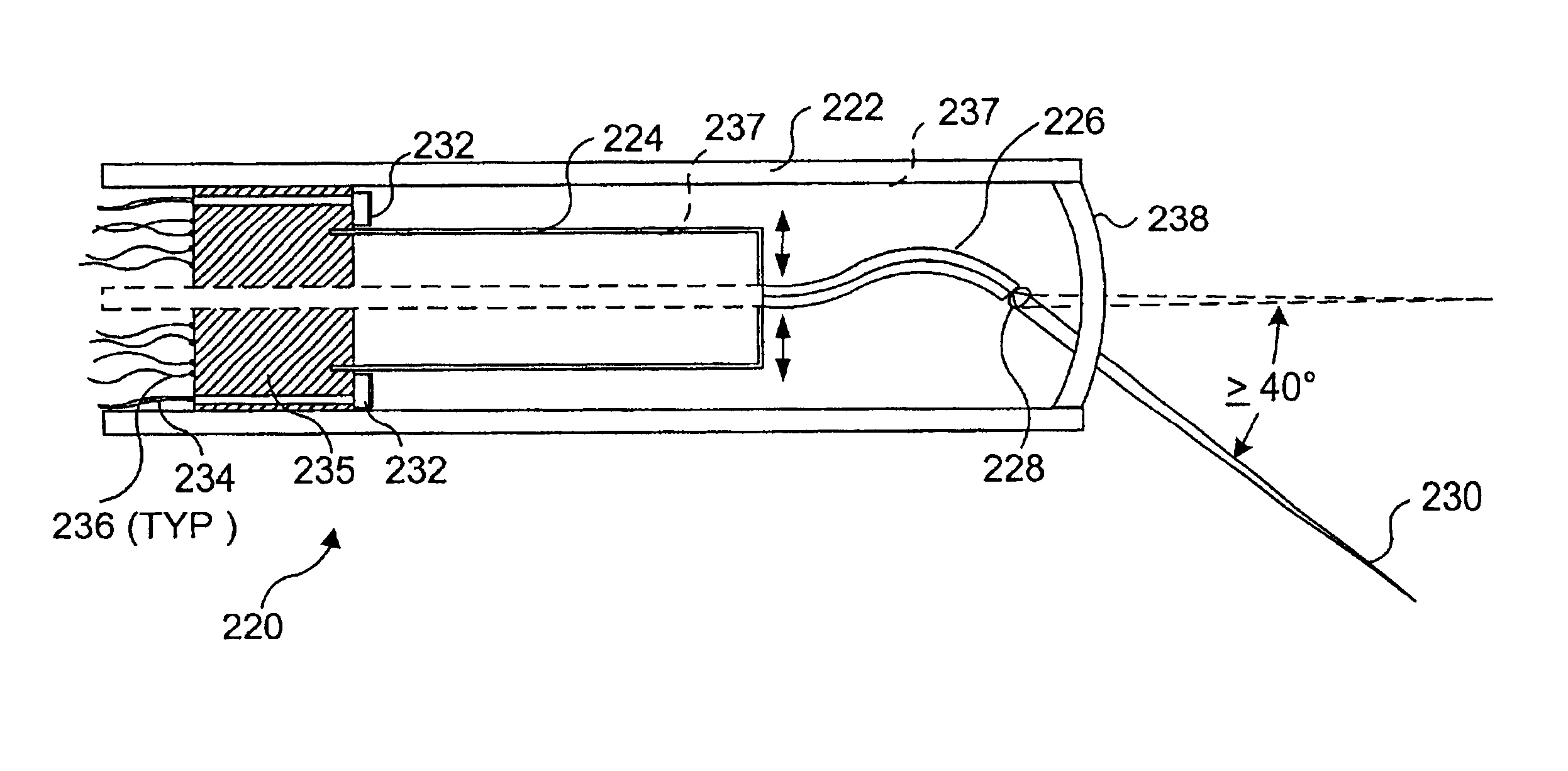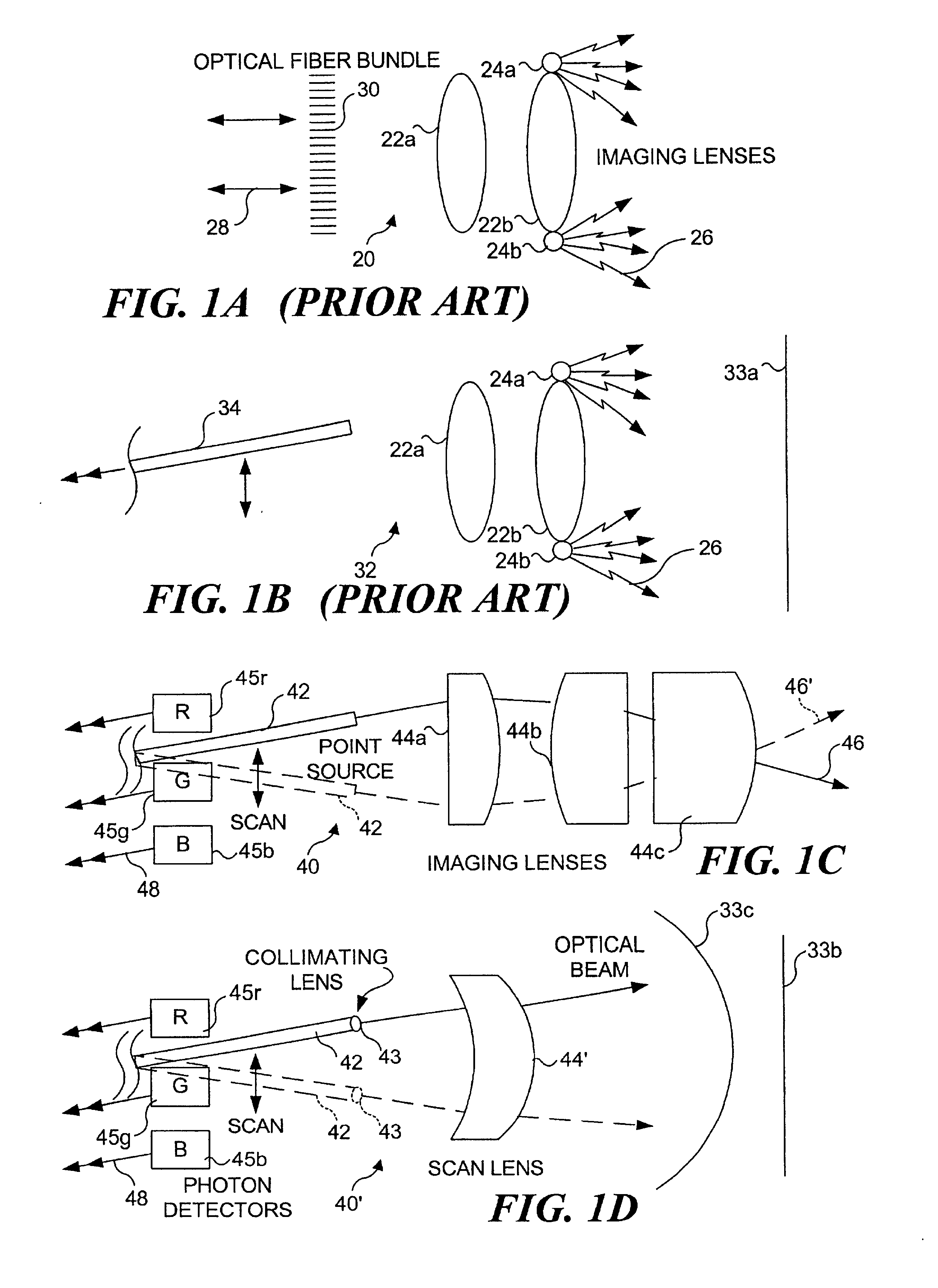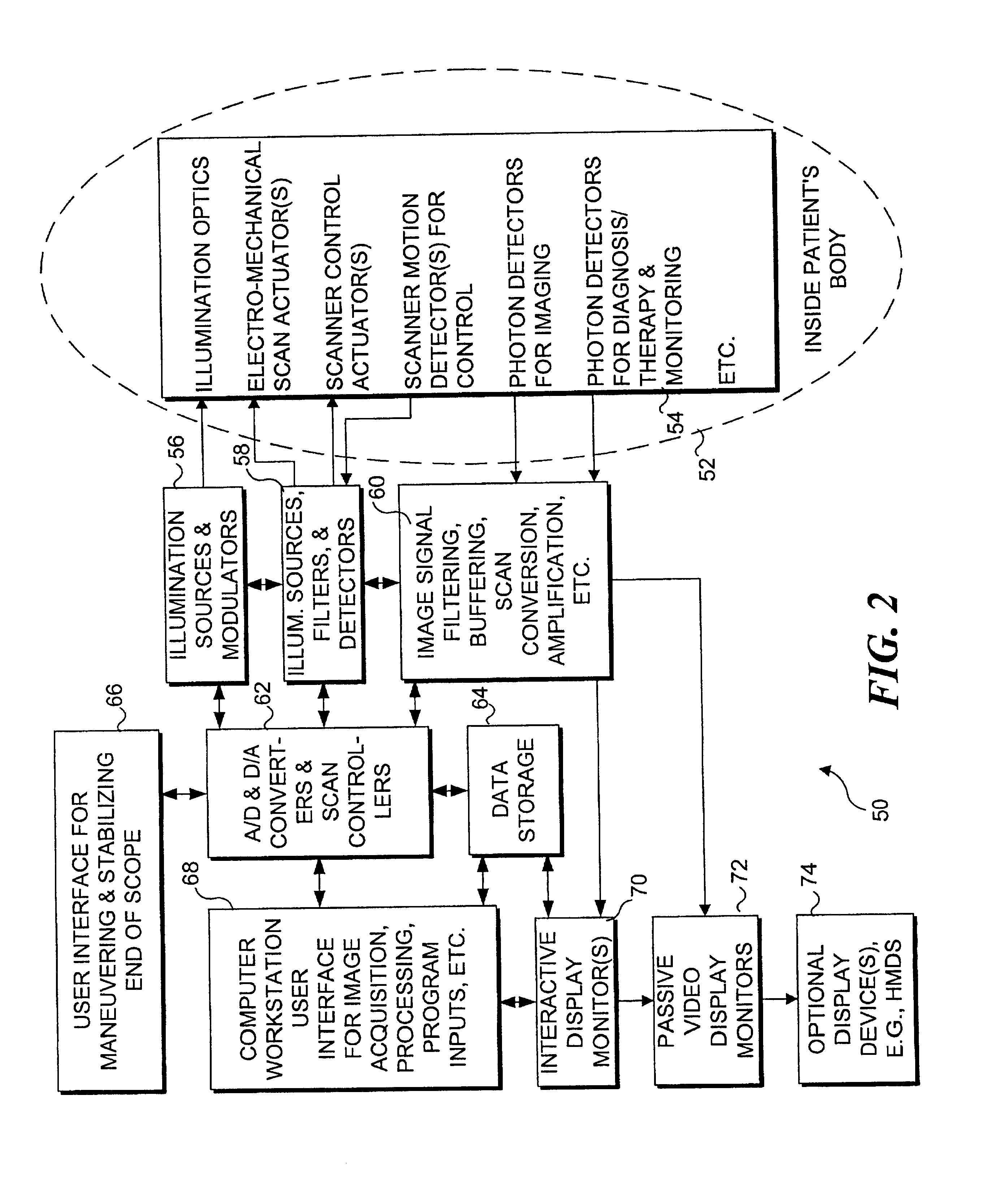Medical imaging, diagnosis, and therapy using a scanning single optical fiber system
a single optical fiber and imaging technology, applied in the field of optical fiber systems, can solve the problems of inability to easily integrate the current tools used for mimps, the size of the resultant instrument is too large, and the flexible scope cannot be made smaller than this limit, and achieves good fov and high resolution
- Summary
- Abstract
- Description
- Claims
- Application Information
AI Technical Summary
Benefits of technology
Problems solved by technology
Method used
Image
Examples
Embodiment Construction
Prior Art Imaging Endoscopes
[0050]With reference to FIG. 1A, the distal end of a flexible endoscope 20 is illustrated schematically, indicating how a non-scanning imaging process is implemented. Imaging lenses 22a and 22b receive light reflected from an ROI within a patient's body illuminated with light sources 24a and 24b. Although shown adjacent imaging lens 22b, these light sources may alternatively be disposed external to the patient's body so that light produced by the sources is conveyed through optical fibers (not shown) to the internal site. Light that has passed through imaging lenses 22a and 22b is received by a pixel array optical fiber bundle 30 (or alternatively by a pixel array camera—not shown). In this case, each camera or detector disposed at the distal end within a patient's body, or proximally at the end of the fiber optic bundle through which the light from imaging lenses 22a and 22b is conveyed outside the patient's body, corresponds to only a single image pixel...
PUM
| Property | Measurement | Unit |
|---|---|---|
| size | aaaaa | aaaaa |
| core diameter | aaaaa | aaaaa |
| diameter | aaaaa | aaaaa |
Abstract
Description
Claims
Application Information
 Login to View More
Login to View More - R&D
- Intellectual Property
- Life Sciences
- Materials
- Tech Scout
- Unparalleled Data Quality
- Higher Quality Content
- 60% Fewer Hallucinations
Browse by: Latest US Patents, China's latest patents, Technical Efficacy Thesaurus, Application Domain, Technology Topic, Popular Technical Reports.
© 2025 PatSnap. All rights reserved.Legal|Privacy policy|Modern Slavery Act Transparency Statement|Sitemap|About US| Contact US: help@patsnap.com



